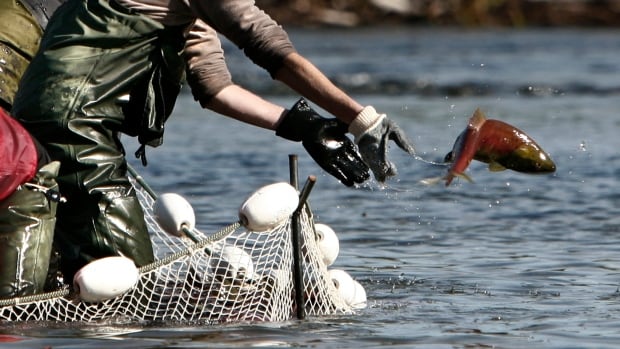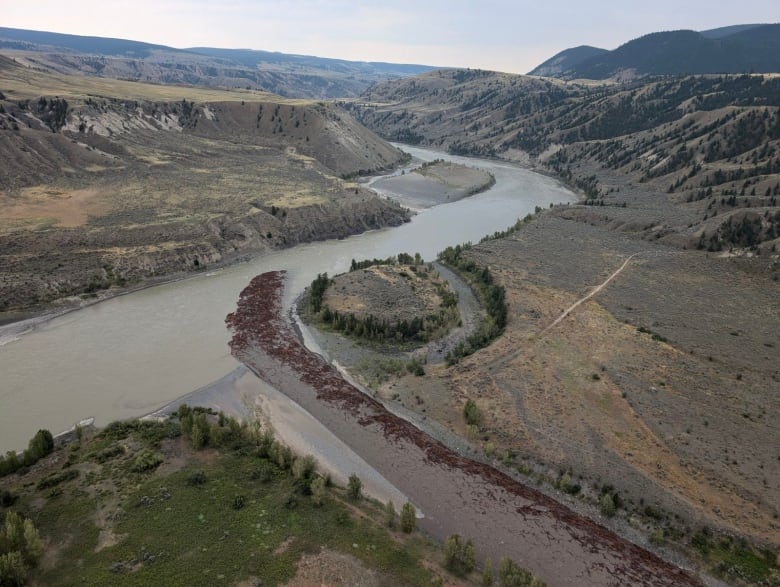
While sockeye salmon have been able to migrate past obstructions from the Chilcotin River landslide, the run is projected to be far lower than average.
At the end of July, a landslide across the Chilcotin River at Farwell Canyon, about 285 kilometres north of Vancouver, blocked the flow of water. More than a week later, built-up debris and a pulse of water surged over the slide and down the Chilcotin and Fraser rivers.
Now, a fraction of the average sockeye run has been observed past the slide area.
A report from the Pacific Salmon Commission says higher-than-average temperatures and obstructions from the slide are hindering salmon migration up the Fraser and Chilcotin rivers.
This year’s salmon sockeye run is already lower than usual, even before it reaches the Chilcotin River.
According to the commission, about 456,800 sockeye have passed through the Fraser River near Mission, B.C., the second-lowest run size on record. The 2020 run set the record for the lowest number of salmon, with 396,000 sockeye.
Some salmon are heading through the landslide area on their way to Chilko Lake, where they reproduce. A Sept. 6 report from the federal Department of Fisheries and Oceans (DFO) says researchers have counted 552 salmon passing a monitoring site at the Chilko River.
In the report, DFO says the data is not infilled and extrapolated in-season. But the count is still significantly lower than in previous years. In 2020, DFO estimates more than 10,000 sockeye passed through the area by the same time that year.
In 2021, DFO says the site saw more than 100,000 sockeye in early September.

Chief Joe Alphonse, the chair of the Tŝilhqot’in National Government, said despite the river conditions improving, the numbers just aren’t there.
Normally, Alphonse said, nearly one million fish pass through the Chilcotin River system to spawn. This year, the Tŝilhqot’in Nations expected to see several hundred thousand fish. Now, Alphonse says he’ll be lucky to see 10,000 sockeye pass through in time to spawn.
“It’s really late in the year. They should be right in the middle of spawning right now,” Alphonse said. “If they’re just passing through the slide area, then it looks pretty slim for them to actually get to Chilko Lake.”
For Alphonse, the fate of the sockeye is a matter of survival. People in Tŝilhqot’in Nations rely on the sockeye as a significant food source. This year, the nations have paused fishing on sockeye and chinook stocks to let the runs recover.
But recovery will take time. In an email to CBC News, DFO spokesperson Lara Sloan said the lasting effects of the slide on the salmon run won’t be clear for up to eight years.
In another four years, the offspring of the current sockeye generation will attempt the run to Chilko Lake. Alphonse says it will take several generations for the fish to recover to their former numbers.
“We’re not trying to build it up just for our own benefit,” he said. “If there’s a healthy Chilko Lake run, it benefits everyone downriver.”